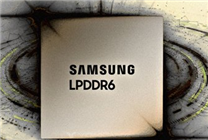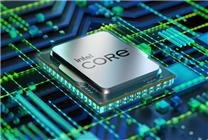Understanding the LPDDR6 Memory Standard: Impacts on Future Devices
Summary:
- The shift to LPDDR6 memory marks a significant technological advancement, promising improved performance and energy efficiency.
- As memory prices rise, understanding memory specifications becomes critical when purchasing new devices.
- Upcoming LPDDR6-enabled devices may enhance multitasking capabilities and gaming performance significantly.
In recent years, mobile technology has seen rapid advancements, particularly in memory specifications. While many users might not fully grasp the nuances of these developments, a closer look at the evolution to the LPDDR6 standard reveals essential insights for consumers and tech enthusiasts alike.
Memory and Storage: What’s the Difference?
First, let’s clarify a common misconception: memory refers to system RAM, while storage is concerned with flash memory used for data retention. Memory directly influences the performance of applications and the overall fluidity of system operations, making it a crucial factor in any device’s performance.
The Shift to LPDDR6
The landscape of mobile memory is undergoing a transformative shift with the advent of the LPDDR6 standard, announced by the JEDEC Solid-State Technology Association. This comes after a long period dominated by LPDDR5, which has been the norm for several years. LPDDR6 promises to enhance frequencies and bandwidth while optimizing power consumption, creating a more stable and efficient memory architecture.
Key Improvements Over LPDDR5
LPDDR6 introduces significant architectural upgrades:
-
Dual Sub-channel Structure: Each LPDDR6 chip consists of two sub-channels, each with a 12-bit width. In contrast, LPDDR5 employs a single-channel design with a width of 16 bits. This dual structure allows for parallel processing, amplifying overall data throughput.
-
Increased Data Rates: The data rates for LPDDR6 range from 10667 to 14400 MT/s, delivering a theoretical peak bandwidth of 32 to 43 GB/s. This marks a substantial improvement—approximately 2.5 to 3.4 times greater than LPDDR5, facilitating faster application access and improved multitasking.
- Enhanced Power Efficiency: Each sub-channel features independent data and command/address signal lines, significantly improving power management. LPDDR6 can adaptively switch between high and low power modes based on workload, optimizing energy consumption.
Cost Implications of LPDDR6
It’s important to note that these enhancements come with a price. As memory manufacturers develop LPDDR6, the initial costs are expected to rise, exacerbated by the current supply chain issues in consumer-grade memory. This creates a challenging environment for consumers looking to upgrade their devices.
Stability Features of LPDDR6
Incorporating on-chip error correction (ECC) within LPDDR6 boosts reliability—a feature previously reserved for high-end professional applications. This measure ensures that devices can handle demanding tasks, such as video rendering and AI applications, with significantly reduced error risks.
Moreover, LPDDR6 integrates command and address parity checking, along with built-in self-test functionalities, enhancing memory reliability and performance consistency.
Looking Ahead: Devices Equipped with LPDDR6
The anticipated LPDDR6 technology is set to influence the next generation of smartphones, laptops, and other smart devices. With expected demonstrations from key players like Samsung at CES 2026 and product rollouts in the subsequent months, consumers should be prepared for devices that leverage this cutting-edge memory standard.
However, potential buyers are advised to exercise patience. As with any new technology, widespread adoption and price reductions may take time. The leap to LPDDR6 might not yield immediate rewards, particularly if consumers are swayed by the excitement of new version numbers.
Conclusion
In summary, LPDDR6 represents a pioneering step in mobile memory technology. Its superior architecture not only enhances performance but also ensures that devices can efficiently manage power consumption—a critical factor as mobile use cases expand. For anyone considering an upgrade or purchase of technology in the near future, understanding these developments will be crucial in making informed choices.
Stay tuned for upcoming devices showcasing LPDDR6 and the transformative impacts they will likely have on the industry.






